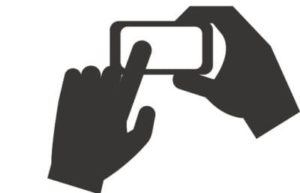Of the myriad ways in which biometric technologies are transforming how the government does its work, its impact in citizen identification is one offering some of the greatest potential to change people’s lives for the better while improving government function.
ID Goes Biometric
In its most common application areas, the rise of biometric identification has been somewhat subtle. Fingerprint, face, and other biometric data have been finding their way into everyday identity documents such as passports, for example. To the citizens using these documents, their biometric functionality is almost forgettable; they’re still just presenting ID when they’re asked, such as at airport customs, the same as they’ve always done. But for the government authorities processing these documents, the biometric component can be critical in helping them to reliably confirm the identities of the individuals they’re dealing with, and to detect fraudsters and potentially prevent criminal and terrorist actions.
There are cases, though, where the emergence of biometric identification has been a critical development for citizens and other individuals under the care of government authorities. India, for example, has emerged as a world leader in pioneering a large-scale biometric national ID program called Aadhaar. The state has moved quickly in implementing this system, and it has not gone without some serious criticism; but the ultimate aim of enabling all citizens to access crucial government services and welfare programs – even if they don’t have paper ID at hand – represents a significant leap forward in citizen identity and governance.
Helping the Underserved and Undocumented

Taking a cue from this effort, the United Nations’ refugee agency, the UNHCR, has become a huge proponent of biometric ID as it has implemented such systems in its efforts to administrate refugee populations. Displaced persons often lack official government-issued identification, but by implementing biometric ID systems – often in collaboration with government partners – the UNHCR has found a way of reliably identifying the individuals in its charge, further enabling these vulnerable people to get the assistance they need.
Major private sector companies have also delved into this area, with Gemalto (now a part of Thales after an acquisition deal) having announced an Identity Management System earlier this year that is aimed at ensuring that the world’s under-documented and underserved are able to get access to official ID.
The Rise of Mobile ID

Such efforts aren’t limited to refugees and the developing world, however. In the US, IDEMIA has been working with state-level authorities to develop a mobile driver’s license, or MDL, solution that would essentially give citizens a virtual version of their driver’s license that can be stored and accessed on a smartphone. This isn’t a biometrics-first approach to ID, but with contemporary smartphones now widely supporting fingerprint- and face-based user authentication, it effectively links the end user’s biometric data to their identity document – even if that document is a virtual one.
In the UK, meanwhile, innovative new companies like Onfido and Yoti have increasingly been working with government authorities to get their mobile-based identity platforms approved for use as official ID in scenarios such as proof of age when buying restricted items, or accessing government services online. These apps are designed to link citizens’ facial biometrics to their government-issued identity documents, again enabling reliable authentication through an everyday smartphone.
ID-ing the Government

And while citizen ID is an essential government service, authorities are also increasingly looking to biometrics to identify themselves. Biometric background checks for government workers are increasingly going digital thanks to contemporary fingerprint-scanning technologies, and organizations like FEMA are using biometric technologies to confirm the identities of volunteers, contractors, and other partners when responding to major natural disasters. Biometric security is even starting to be used to identify government officials in high-level global meetings, as in the deployment of facial recognition at an EU Summit earlier this year.
This all serves to illustrate the transformative power of biometrics in one of the most common sense areas where such technologies can be applied: government ID. Government authorities are commonly thought to be the ultimate arbitrators of official identity, and they’re increasingly relying on sophisticated biometric tools to perform that role most effectively.
*
Government Biometrics Month is made possible thanks to our sponsors: NEC Corporation of America & Aware, Inc
–
September 13, 2019 – by Alex Perala









Follow Us